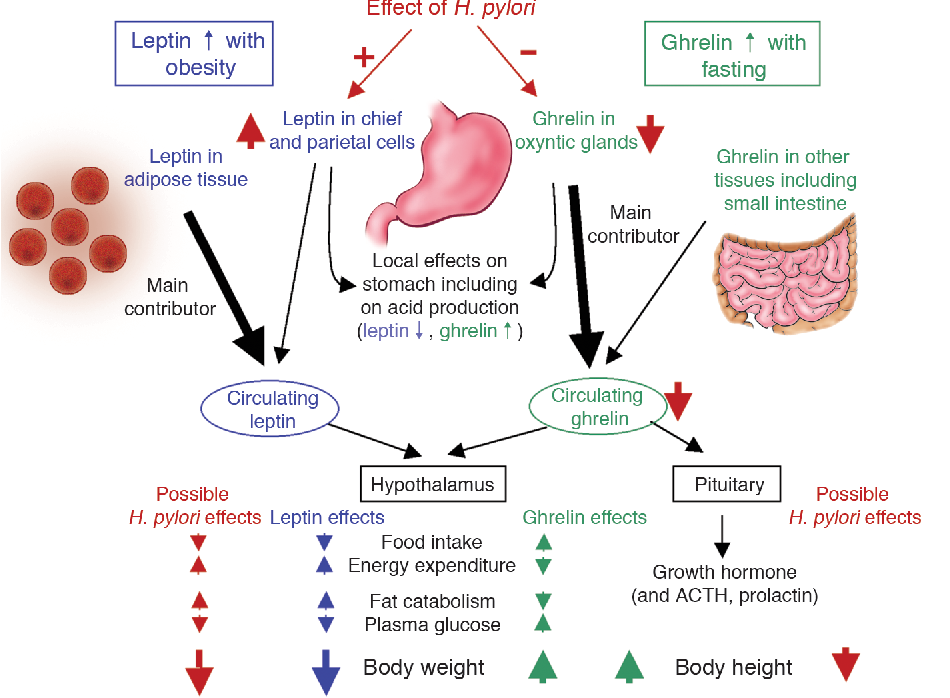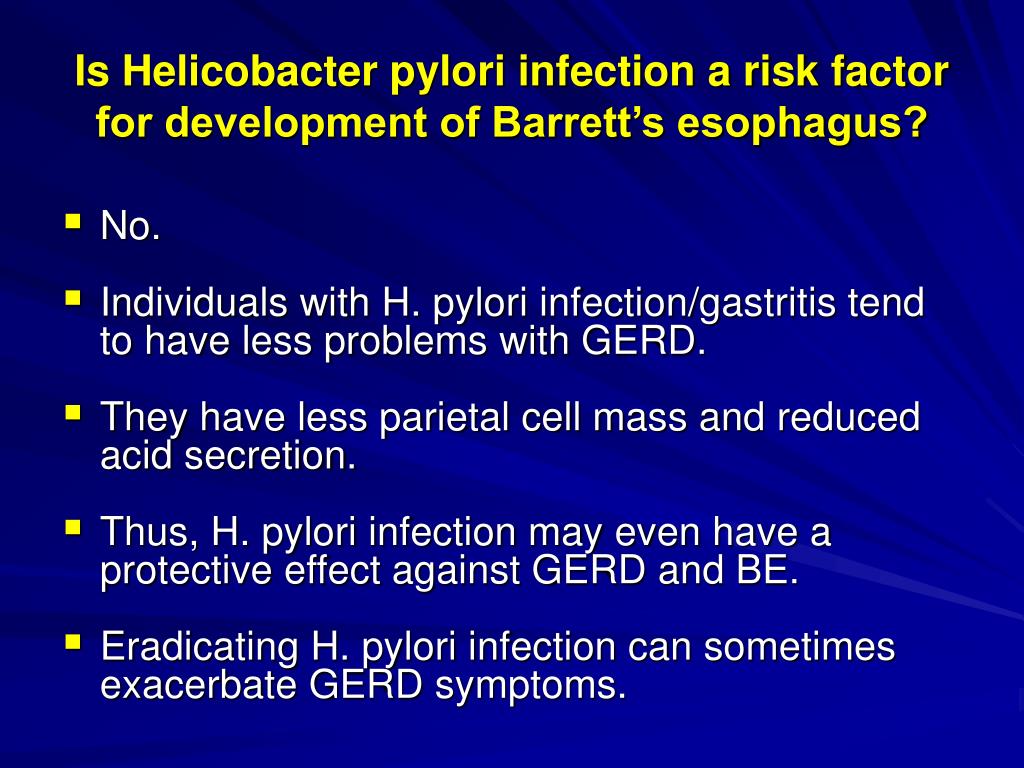What is h pylori infection symptoms. H. pylori Infection: Symptoms, Diagnosis, Treatment, and Prevention Guide
What are the common symptoms of H. pylori infection. How is H. pylori diagnosed and treated. Can H. pylori infection be prevented. What are the long-term effects of H. pylori infection. How does H. pylori cause ulcers and stomach cancer.
Understanding H. pylori: The Stomach Bacteria That Can Cause Ulcers
Helicobacter pylori, commonly known as H. pylori, is a type of bacteria that can colonize the human digestive tract. This microscopic organism has the ability to survive in the harsh, acidic environment of the stomach, where it can lead to various gastrointestinal issues. While many people carry H. pylori without experiencing symptoms, for others, it can be the root cause of serious health problems.
H. pylori infection is widespread, affecting approximately two-thirds of the world’s population. However, the prevalence of infection is decreasing in many parts of the world due to improved sanitation and access to clean water. Despite this trend, H. pylori remains a significant health concern, particularly in developing countries.

How Does H. pylori Infect Humans?
H. pylori transmission typically occurs through oral-oral or fecal-oral routes. This means that the bacteria can spread through:
- Contaminated food or water
- Sharing utensils or food with an infected person
- Contact with infected saliva or other bodily fluids
- Poor hygiene practices
While infection often occurs during childhood, adults can also contract H. pylori. The bacteria can remain dormant in the body for years before causing noticeable symptoms, which is why many people are unaware of their infection status.
Recognizing the Symptoms of H. pylori Infection
Many individuals with H. pylori infection remain asymptomatic. However, when symptoms do manifest, they can range from mild discomfort to severe pain. The most common symptoms associated with H. pylori infection include:
- Abdominal pain or discomfort, often described as a burning sensation
- Bloating and excessive gas
- Nausea and occasional vomiting
- Loss of appetite
- Unintended weight loss
- Frequent burping
These symptoms are often related to the development of peptic ulcers, which are sores that form in the lining of the stomach or duodenum (the first part of the small intestine). H. pylori is responsible for the majority of peptic ulcers not caused by nonsteroidal anti-inflammatory drugs (NSAIDs).

When to Seek Medical Attention
While many H. pylori infections can be managed with treatment, certain symptoms warrant immediate medical attention. These include:
- Severe, sharp abdominal pain
- Vomiting blood or material that looks like coffee grounds
- Dark, tarry stools
- Persistent fatigue or weakness
- Difficulty breathing or dizziness
These symptoms may indicate a complication such as a bleeding ulcer or perforation of the stomach lining, which requires urgent medical intervention.
The Link Between H. pylori and Stomach Cancer
One of the most concerning aspects of H. pylori infection is its potential to increase the risk of stomach cancer. While the majority of people infected with H. pylori will not develop cancer, the bacteria is classified as a carcinogen by the World Health Organization.
H. pylori can lead to chronic inflammation of the stomach lining, a condition known as gastritis. Over time, this persistent inflammation can cause changes in the stomach cells, potentially leading to the development of precancerous lesions and, in some cases, gastric cancer.

Risk Factors for H. pylori-Related Stomach Cancer
Several factors can influence the likelihood of developing stomach cancer in individuals with H. pylori infection:
- Duration of infection
- Genetic predisposition
- Dietary factors, such as high salt intake
- Smoking
- Strain of H. pylori
It’s important to note that while H. pylori is a risk factor for stomach cancer, the overall risk remains relatively low. Regular medical check-ups and prompt treatment of H. pylori infection can help mitigate this risk.
Diagnostic Approaches for H. pylori Infection
Accurate diagnosis of H. pylori infection is crucial for effective treatment. Healthcare providers have several diagnostic tools at their disposal, each with its own advantages and limitations.
Non-Invasive Tests
Non-invasive tests are often the first line of diagnosis for H. pylori infection. These include:
- Urea Breath Test: This test involves drinking a solution containing urea labeled with an isotope. If H. pylori is present, it will break down the urea, releasing carbon dioxide that can be detected in the breath.
- Stool Antigen Test: This test looks for H. pylori antigens in a stool sample.
- Blood Antibody Test: This test checks for antibodies to H. pylori in the blood, indicating past or current infection.
Invasive Tests
In some cases, more invasive procedures may be necessary for diagnosis or to assess the extent of damage caused by H. pylori:
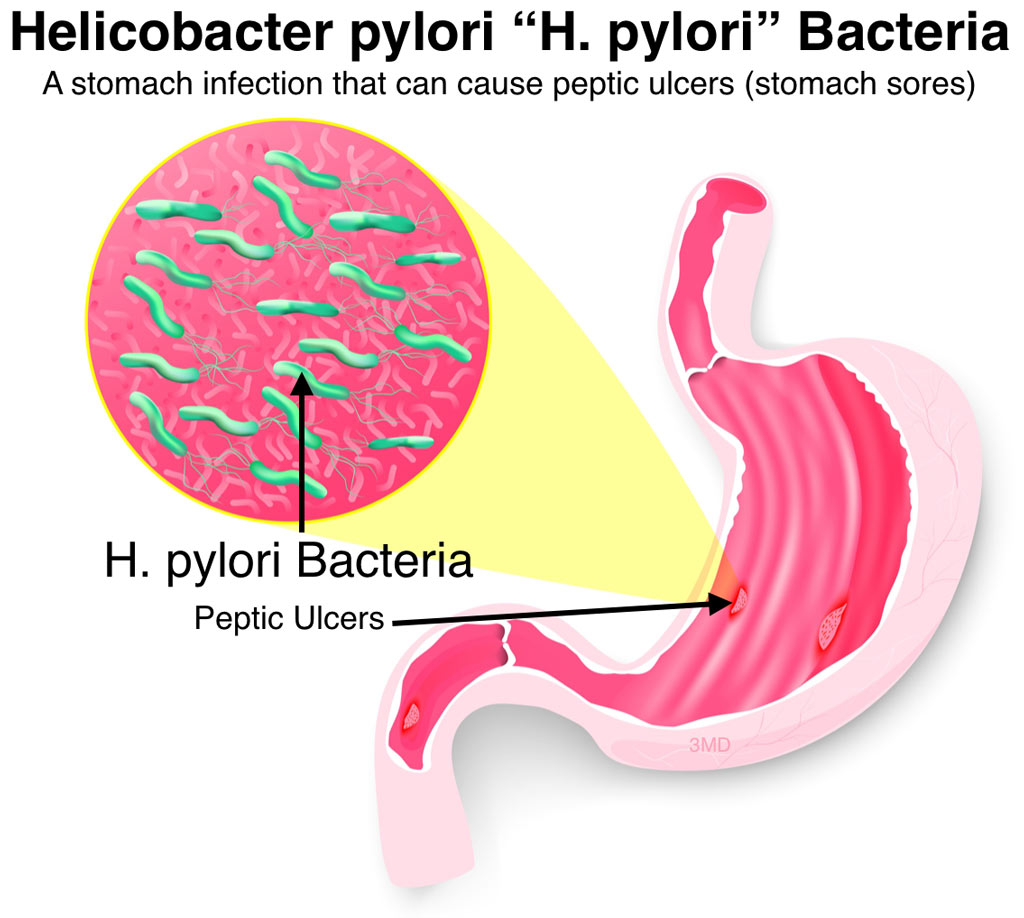
- Endoscopy: A thin, flexible tube with a camera is inserted through the mouth to examine the stomach lining directly. Biopsies can be taken during this procedure for further testing.
- Biopsy-based Tests: Samples of stomach tissue can be tested for the presence of H. pylori using various methods, including culture, histology, and rapid urease testing.
The choice of diagnostic test often depends on factors such as the patient’s age, symptoms, and medical history, as well as the availability of testing methods and local guidelines.
Treatment Strategies for H. pylori Infection
Once H. pylori infection is confirmed, treatment typically involves a combination of medications to eradicate the bacteria and heal any damage to the stomach lining. The standard approach, known as triple therapy, includes:
- Two antibiotics to kill the bacteria
- A proton pump inhibitor (PPI) to reduce stomach acid production
This combination is usually taken for 7 to 14 days, depending on the specific regimen prescribed. In some cases, a fourth medication, such as bismuth subsalicylate, may be added to the treatment plan.

Challenges in H. pylori Treatment
While treatment for H. pylori is generally effective, there are some challenges:
- Antibiotic Resistance: Some strains of H. pylori have developed resistance to commonly used antibiotics, making treatment more difficult.
- Compliance: The treatment regimen can be complex, with multiple medications taken several times a day, which can lead to poor patient compliance.
- Side Effects: Antibiotics and PPIs can cause side effects such as nausea, diarrhea, and taste disturbances.
To address these challenges, healthcare providers may use alternative treatment strategies, such as sequential therapy or quadruple therapy, especially in areas with high rates of antibiotic resistance.
Prevention Strategies for H. pylori Infection
Preventing H. pylori infection is primarily focused on improving sanitation and hygiene practices. While there is no vaccine currently available for H. pylori, several measures can help reduce the risk of infection:
- Practicing good hand hygiene, especially before eating and after using the bathroom
- Consuming clean, safe water and properly prepared food
- Avoiding sharing utensils, glasses, or toothbrushes
- Ensuring proper sanitation and waste management in communities
In areas with high prevalence of H. pylori infection, public health initiatives aimed at improving water quality and sanitation can have a significant impact on reducing infection rates.

Is H. pylori Infection Preventable in Children?
Children are particularly vulnerable to H. pylori infection, especially in developing countries. Preventive measures for children include:
- Promoting breastfeeding, which may provide some protection against H. pylori
- Educating families about proper hygiene practices
- Ensuring access to clean water and sanitation facilities in schools and communities
- Regular health check-ups to detect and treat infections early
While complete prevention of H. pylori infection may not be possible, these measures can significantly reduce the risk of transmission and infection in children.
Long-Term Management and Follow-Up After H. pylori Treatment
After completing treatment for H. pylori infection, follow-up is essential to ensure successful eradication of the bacteria and to monitor for any potential complications. The long-term management plan typically includes:
Post-Treatment Testing
A follow-up test to confirm eradication of H. pylori is usually performed 4 to 8 weeks after completion of treatment. This is typically done using a urea breath test or stool antigen test. If the test is positive, indicating persistent infection, retreatment with a different antibiotic regimen may be necessary.

Monitoring for Recurrence
Even after successful eradication, there is a risk of reinfection with H. pylori. Patients should be aware of potential symptoms and seek medical attention if they recur. In some cases, particularly for individuals at high risk of gastric cancer, regular endoscopic surveillance may be recommended.
Lifestyle Modifications
To promote overall digestive health and reduce the risk of future complications, patients may be advised to:
- Quit smoking
- Limit alcohol consumption
- Maintain a healthy diet rich in fruits and vegetables
- Avoid or reduce the use of NSAIDs, if possible
These lifestyle changes can help protect the stomach lining and reduce the risk of ulcer recurrence or other gastrointestinal issues.
Future Directions in H. pylori Research and Management
As our understanding of H. pylori continues to evolve, researchers are exploring new avenues for prevention, diagnosis, and treatment of this common infection. Some areas of ongoing research include:

Vaccine Development
While no H. pylori vaccine is currently available, several candidates are in various stages of development. A successful vaccine could potentially prevent infection and reduce the global burden of H. pylori-related diseases.
Novel Diagnostic Techniques
Researchers are working on developing more accurate and less invasive diagnostic tools for H. pylori infection. These include molecular techniques that can detect antibiotic resistance patterns, allowing for more targeted treatment approaches.
Alternative Treatment Strategies
With the growing concern of antibiotic resistance, scientists are investigating alternative treatments for H. pylori infection. These include the use of probiotics, phage therapy, and natural compounds with anti-H. pylori properties.
Personalized Medicine Approaches
Advances in genomics and molecular biology are paving the way for personalized treatment strategies based on the specific strain of H. pylori and the patient’s genetic profile. This could lead to more effective and tailored treatment regimens in the future.
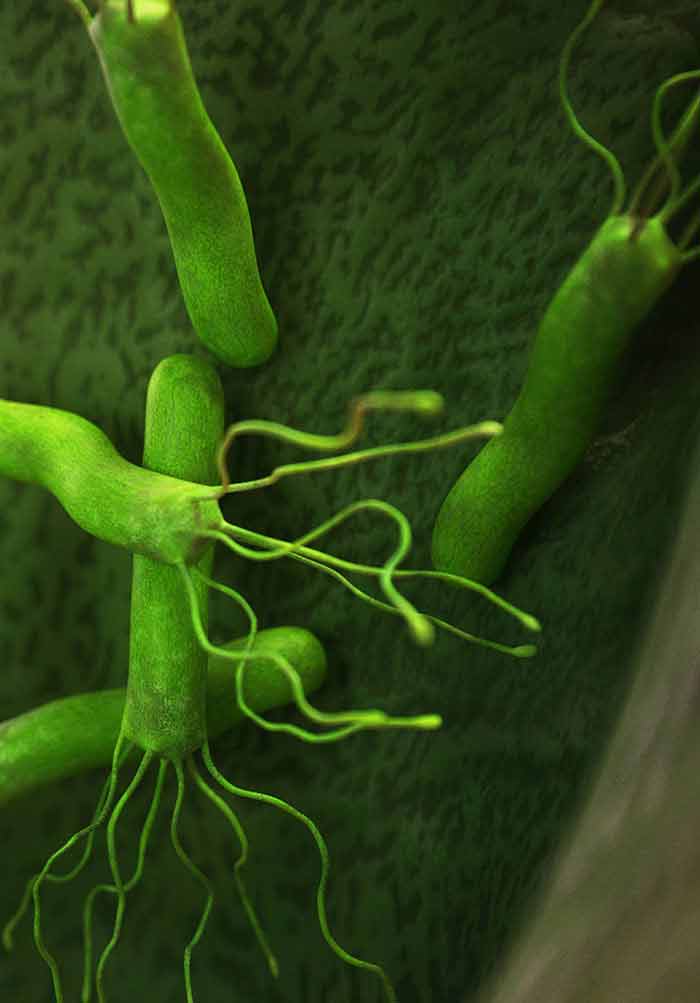
As research progresses, our ability to manage H. pylori infection and its associated complications is likely to improve, potentially leading to a reduction in the global impact of this widespread bacterial infection.
H. pylori Bacteria Infection: Symptoms, Diagnosis, Treatment, Prevention
Written by Susan Bernstein
- How H. pylori Makes You Sick
- Symptoms
- Getting a Diagnosis
- Treatment for H. pylori
- Prevention
- What can I expect after H. pylori infection?
- Where can I find information or support?
- More
Helicobacter pylori(H. pylori) is a type of bacteria. These germs can enter your body and live in your digestive tract. After many years, they can cause sores, called ulcers, in the lining of your stomach or the upper part of your small intestine. For some people, an infection can lead to stomach cancer.
Infection with H. pylori is common. About two-thirds of the world’s population has it in their bodies. For most people, it doesn’t cause ulcers or any other symptoms. If you do have problems, there are medicines that can kill the germs and help sores heal.
As more of the world gets access to clean water and sanitation, fewer people than before are getting the bacteria. With good health habits, you can protect yourself and your children from H. pylori.
With good health habits, you can protect yourself and your children from H. pylori.
For decades, doctors thought people got ulcers from stress, spicy foods, smoking, or other lifestyle habits. But when scientists discovered H. pylori in 1982, they found that the germs were the cause of most stomach ulcers.
After H. pylori enters your body, it attacks the lining of your stomach, which usually protects you from the acid your body uses to digest food. Once the bacteria have done enough damage, acid can get through the lining, which leads to ulcers. These may bleed, cause infections, or keep food from moving through your digestive tract.
You can get H. pylori from food, water, or utensils. It’s more common in countries or communities that lack clean water or good sewage systems. You can also pick up the bacteria through contact with the saliva or other body fluids of infected people.
Many people get H. pylori during childhood, but adults can get it, too. The germs live in the body for years before symptoms start, but most people who have it will never get ulcers. Doctors aren’t sure why only some people get ulcers after an infection.
The germs live in the body for years before symptoms start, but most people who have it will never get ulcers. Doctors aren’t sure why only some people get ulcers after an infection.
If you have an ulcer, you may feel a dull or burning pain in your belly. It may come and go, but you’ll probably feel it most when your stomach is empty, such as between meals or in the middle of the night. It can last for a few minutes or for hours. You may feel better after you eat, drink milk, or take an antacid.
Other signs of an ulcer include:
- Bloating
- Burping
- Not feeling hungry
- Nausea
- Vomiting
- Weight loss for no clear reason
Ulcers can bleed into your stomach or intestines, which can be dangerous to your health. Get medical help right away if you have any of these symptoms:
- Stool that is bloody, dark red, or black
- Trouble breathing
- Dizziness or fainting
- Feeling very tired for no reason
- Pale skin color
- Vomit that has blood or looks like coffee grounds
- Severe, sharp stomach pain
It’s not common, but H.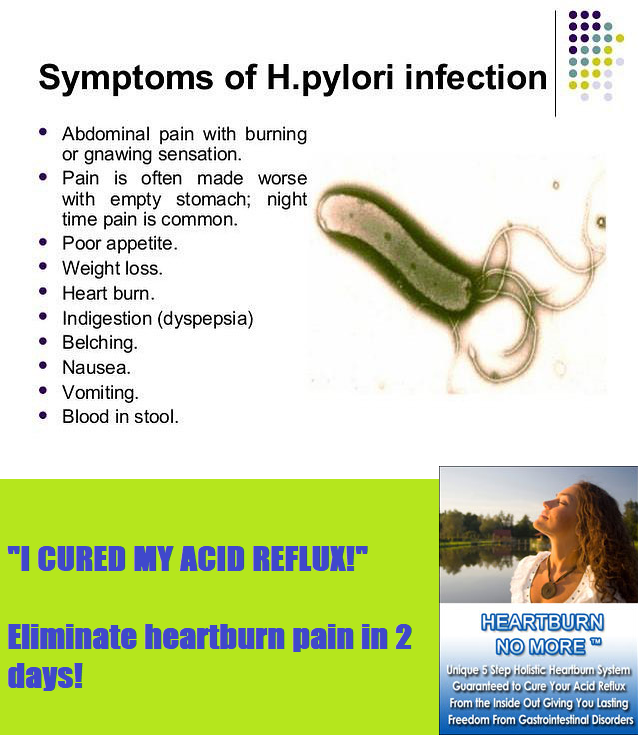 pylori infection can cause stomach cancer. The disease has few symptoms at first, such as heartburn. Over time, you may notice:
pylori infection can cause stomach cancer. The disease has few symptoms at first, such as heartburn. Over time, you may notice:
- Belly pain or swelling
- Nausea
- Not feeling hungry
- Feeling full after you eat just a small amount
- Vomiting
- Weight loss for no reason
If you don’t have symptoms of an ulcer, your doctor probably won’t test you for H. pylori. But if you have them now or have in the past, it’s best to get tested. Medicines like nonsteroidal anti-inflammatory drugs (NSAIDs) can also damage your stomach lining, so it’s important to find out what’s causing your symptoms so you can get the right treatment.
To start, your doctor will ask you about your medical history, your symptoms, and any medicines you take. Then they’ll give you a physical exam, including pressing on your belly to check for swelling, tenderness, or pain. You may also have:
- Tests of your blood and stool, which can help find an infection
- Urea breath test.
 You’ll drink a special liquid that has a substance called urea. Then you’ll breathe into a bag, which your doctor will send to a lab for testing. If you have H. pylori, the bacteria will change the urea in your body into carbon dioxide, and lab tests will show that your breath has higher than normal levels of the gas.
You’ll drink a special liquid that has a substance called urea. Then you’ll breathe into a bag, which your doctor will send to a lab for testing. If you have H. pylori, the bacteria will change the urea in your body into carbon dioxide, and lab tests will show that your breath has higher than normal levels of the gas.
To look more closely at your ulcers, your doctor may use:
- Upper gastrointestinal endoscopy. In a hospital, a doctor will use a tube with a small camera, called an endoscope, to look down your throat and into your stomach and the upper part of your small intestine. The procedure may also be used to collect a sample that will be examined for the presence of the bacteria. You may be asleep or awake during the procedure, but you’ll get medicine to make you more comfortable.
- Upper GI tests. In a hospital, you’ll drink a liquid that has a substance called barium, and your doctor will give you an X-ray.
 The fluid coats your throat and stomach and makes them stand out clearly on the image.
The fluid coats your throat and stomach and makes them stand out clearly on the image. - Computed tomography (CT) scan. It’s a powerful X-ray that makes detailed pictures of the inside of your body.
If you have H. pylori, your doctor may also test you for stomach cancer. This includes:
- Physical exam
- Blood tests to check for anemia, when your body doesn’t have enough red blood cells. It could happen if you have a tumor that bleeds.
- Fecal occult blood test, which checks your stool for blood that’s not visible to the naked eye
- Endoscopy
- Biopsy, when a doctor takes a small piece of tissue from your stomach to look for signs of cancer. Your doctor may do this during an endoscopy.
- Tests that make detailed pictures of the insides of your body, such as a CT scan or magnetic resonance imaging (MRI)
If you have ulcers caused by H. pylori, you’ll need treatment to kill the germs, heal your stomach lining, and keep the sores from coming back. It usually takes 1 to 2 weeks of treatment to get better.
It usually takes 1 to 2 weeks of treatment to get better.
Your doctor will probably tell you to take a few different types of drugs. The options include:
- Antibiotics to kill the bacteria in your body, such as amoxicillin, clarithromycin (Biaxin), metronidazole (Flagyl), tetracycline (Sumycin), or tinidazole (Tindamax). You’ll most likely take at least two from this group.
- Drugs that reduce the amount of acid in your stomach by blocking the tiny pumps that produce it. They include dexlansoprazole (Dexilant), esomeprazole (Nexium), lansoprazole (Prevacid), omeprazole (Prilosec), pantoprazole (Protonix), rabeprazole (Aciphex), or vonoprazan/amoxicillin/clarithromycin (Voquezna).
- Bismuth subsalicylate, which may also help kill H. pylori along with your antibiotics
- Medicines that block the chemical histamine, which prompts your stomach to make more acid. These are cimetidine (Tagamet), famotidine Pepcid, Zantac 360), and nizatidine (Axid).

Your treatment could mean you’ll take 14 or more pills per day for a few weeks, which seems like a lot of medicine. But it’s really important to take everything that your doctor prescribes and to follow their instructions. If you don’t take antibiotics the right way, bacteria in your body can become resistant to them, which makes infections harder to treat. If your medications bother you, talk to your doctor about your treatment options and how you can handle side effects.
About 1-2 weeks after you finish your treatment, your doctor may test your breath or stool again to make sure the infection is gone.
You can protect yourself from getting an H. pylori infection with the same steps you take to keep other germs at bay:
- Wash your hands after you use the bathroom and before you prepare or eat food. Teach your children to do the same.
- Avoid food or water that’s not clean.
- Don’t eat anything that isn’t cooked thoroughly.
- Avoid food served by people who haven’t washed their hands.

Though stress and spicy foods don’t cause ulcers, they can keep them from healing quickly or make your pain worse. Talk to your doctor about ways to manage your stress, improve your diet, and, if you smoke, how you can get help to quit.
Most ulcers caused by H. pylori will heal after a few weeks of treatment. If you’ve had one, you should avoid taking NSAIDs for pain, since these drugs can damage your stomach lining. If you need pain medicine, ask your doctor to recommend some.
You can find information about H. pylori infection and ulcers from the American College of Gastroenterology. For information on stomach cancer, as well as online and local support groups, visit the American Cancer Society.
Top Picks
H.
 pylori Bacteria Infection: Symptoms, Diagnosis, Treatment, Prevention
pylori Bacteria Infection: Symptoms, Diagnosis, Treatment, Prevention
Written by Susan Bernstein
- How H. pylori Makes You Sick
- Symptoms
- Getting a Diagnosis
- Treatment for H. pylori
- Prevention
- What can I expect after H. pylori infection?
- Where can I find information or support?
- More
Helicobacter pylori(H. pylori) is a type of bacteria. These germs can enter your body and live in your digestive tract. After many years, they can cause sores, called ulcers, in the lining of your stomach or the upper part of your small intestine. For some people, an infection can lead to stomach cancer.
Infection with H. pylori is common. About two-thirds of the world’s population has it in their bodies. For most people, it doesn’t cause ulcers or any other symptoms. If you do have problems, there are medicines that can kill the germs and help sores heal.
As more of the world gets access to clean water and sanitation, fewer people than before are getting the bacteria. With good health habits, you can protect yourself and your children from H. pylori.
With good health habits, you can protect yourself and your children from H. pylori.
For decades, doctors thought people got ulcers from stress, spicy foods, smoking, or other lifestyle habits. But when scientists discovered H. pylori in 1982, they found that the germs were the cause of most stomach ulcers.
After H. pylori enters your body, it attacks the lining of your stomach, which usually protects you from the acid your body uses to digest food. Once the bacteria have done enough damage, acid can get through the lining, which leads to ulcers. These may bleed, cause infections, or keep food from moving through your digestive tract.
You can get H. pylori from food, water, or utensils. It’s more common in countries or communities that lack clean water or good sewage systems. You can also pick up the bacteria through contact with the saliva or other body fluids of infected people.
Many people get H. pylori during childhood, but adults can get it, too.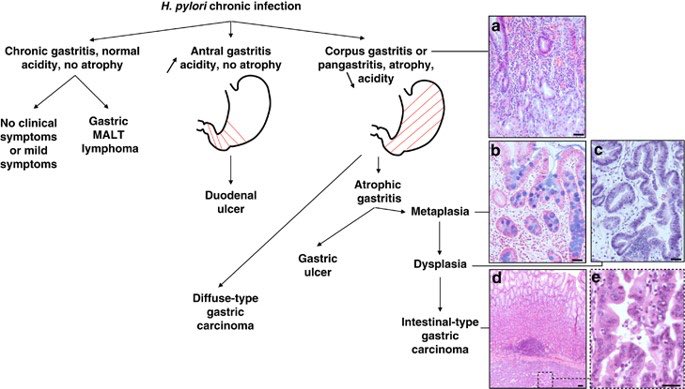 The germs live in the body for years before symptoms start, but most people who have it will never get ulcers. Doctors aren’t sure why only some people get ulcers after an infection.
The germs live in the body for years before symptoms start, but most people who have it will never get ulcers. Doctors aren’t sure why only some people get ulcers after an infection.
If you have an ulcer, you may feel a dull or burning pain in your belly. It may come and go, but you’ll probably feel it most when your stomach is empty, such as between meals or in the middle of the night. It can last for a few minutes or for hours. You may feel better after you eat, drink milk, or take an antacid.
Other signs of an ulcer include:
- Bloating
- Burping
- Not feeling hungry
- Nausea
- Vomiting
- Weight loss for no clear reason
Ulcers can bleed into your stomach or intestines, which can be dangerous to your health. Get medical help right away if you have any of these symptoms:
- Stool that is bloody, dark red, or black
- Trouble breathing
- Dizziness or fainting
- Feeling very tired for no reason
- Pale skin color
- Vomit that has blood or looks like coffee grounds
- Severe, sharp stomach pain
It’s not common, but H.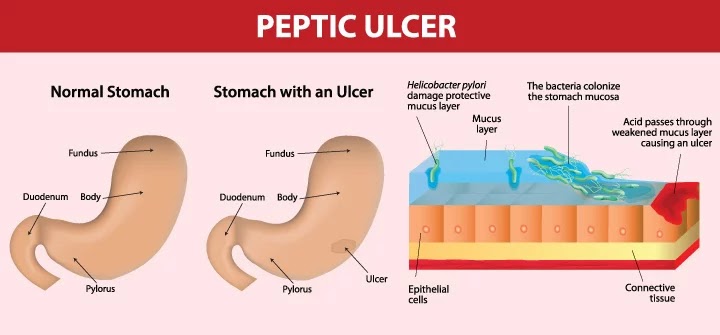 pylori infection can cause stomach cancer. The disease has few symptoms at first, such as heartburn. Over time, you may notice:
pylori infection can cause stomach cancer. The disease has few symptoms at first, such as heartburn. Over time, you may notice:
- Belly pain or swelling
- Nausea
- Not feeling hungry
- Feeling full after you eat just a small amount
- Vomiting
- Weight loss for no reason
If you don’t have symptoms of an ulcer, your doctor probably won’t test you for H. pylori. But if you have them now or have in the past, it’s best to get tested. Medicines like nonsteroidal anti-inflammatory drugs (NSAIDs) can also damage your stomach lining, so it’s important to find out what’s causing your symptoms so you can get the right treatment.
To start, your doctor will ask you about your medical history, your symptoms, and any medicines you take. Then they’ll give you a physical exam, including pressing on your belly to check for swelling, tenderness, or pain. You may also have:
- Tests of your blood and stool, which can help find an infection
- Urea breath test.
 You’ll drink a special liquid that has a substance called urea. Then you’ll breathe into a bag, which your doctor will send to a lab for testing. If you have H. pylori, the bacteria will change the urea in your body into carbon dioxide, and lab tests will show that your breath has higher than normal levels of the gas.
You’ll drink a special liquid that has a substance called urea. Then you’ll breathe into a bag, which your doctor will send to a lab for testing. If you have H. pylori, the bacteria will change the urea in your body into carbon dioxide, and lab tests will show that your breath has higher than normal levels of the gas.
To look more closely at your ulcers, your doctor may use:
- Upper gastrointestinal endoscopy. In a hospital, a doctor will use a tube with a small camera, called an endoscope, to look down your throat and into your stomach and the upper part of your small intestine. The procedure may also be used to collect a sample that will be examined for the presence of the bacteria. You may be asleep or awake during the procedure, but you’ll get medicine to make you more comfortable.
- Upper GI tests. In a hospital, you’ll drink a liquid that has a substance called barium, and your doctor will give you an X-ray.
 The fluid coats your throat and stomach and makes them stand out clearly on the image.
The fluid coats your throat and stomach and makes them stand out clearly on the image. - Computed tomography (CT) scan. It’s a powerful X-ray that makes detailed pictures of the inside of your body.
If you have H. pylori, your doctor may also test you for stomach cancer. This includes:
- Physical exam
- Blood tests to check for anemia, when your body doesn’t have enough red blood cells. It could happen if you have a tumor that bleeds.
- Fecal occult blood test, which checks your stool for blood that’s not visible to the naked eye
- Endoscopy
- Biopsy, when a doctor takes a small piece of tissue from your stomach to look for signs of cancer. Your doctor may do this during an endoscopy.
- Tests that make detailed pictures of the insides of your body, such as a CT scan or magnetic resonance imaging (MRI)
If you have ulcers caused by H. pylori, you’ll need treatment to kill the germs, heal your stomach lining, and keep the sores from coming back. It usually takes 1 to 2 weeks of treatment to get better.
It usually takes 1 to 2 weeks of treatment to get better.
Your doctor will probably tell you to take a few different types of drugs. The options include:
- Antibiotics to kill the bacteria in your body, such as amoxicillin, clarithromycin (Biaxin), metronidazole (Flagyl), tetracycline (Sumycin), or tinidazole (Tindamax). You’ll most likely take at least two from this group.
- Drugs that reduce the amount of acid in your stomach by blocking the tiny pumps that produce it. They include dexlansoprazole (Dexilant), esomeprazole (Nexium), lansoprazole (Prevacid), omeprazole (Prilosec), pantoprazole (Protonix), rabeprazole (Aciphex), or vonoprazan/amoxicillin/clarithromycin (Voquezna).
- Bismuth subsalicylate, which may also help kill H. pylori along with your antibiotics
- Medicines that block the chemical histamine, which prompts your stomach to make more acid. These are cimetidine (Tagamet), famotidine Pepcid, Zantac 360), and nizatidine (Axid).

Your treatment could mean you’ll take 14 or more pills per day for a few weeks, which seems like a lot of medicine. But it’s really important to take everything that your doctor prescribes and to follow their instructions. If you don’t take antibiotics the right way, bacteria in your body can become resistant to them, which makes infections harder to treat. If your medications bother you, talk to your doctor about your treatment options and how you can handle side effects.
About 1-2 weeks after you finish your treatment, your doctor may test your breath or stool again to make sure the infection is gone.
You can protect yourself from getting an H. pylori infection with the same steps you take to keep other germs at bay:
- Wash your hands after you use the bathroom and before you prepare or eat food. Teach your children to do the same.
- Avoid food or water that’s not clean.
- Don’t eat anything that isn’t cooked thoroughly.
- Avoid food served by people who haven’t washed their hands.

Though stress and spicy foods don’t cause ulcers, they can keep them from healing quickly or make your pain worse. Talk to your doctor about ways to manage your stress, improve your diet, and, if you smoke, how you can get help to quit.
Most ulcers caused by H. pylori will heal after a few weeks of treatment. If you’ve had one, you should avoid taking NSAIDs for pain, since these drugs can damage your stomach lining. If you need pain medicine, ask your doctor to recommend some.
You can find information about H. pylori infection and ulcers from the American College of Gastroenterology. For information on stomach cancer, as well as online and local support groups, visit the American Cancer Society.
Top Picks
Infection with Helicobacter pylori: symptoms, consequences, treatment
Helicobacter pylori (Helicobacter pylori) is a bacterium that inhabits various parts of the stomach and duodenum. The microorganism, which is simply called “Helicobacter”, provokes the development of many diseases of the gastroduodenal zone: gastritis, duodenitis, stomach and duodenal ulcers.
The microorganism, which is simply called “Helicobacter”, provokes the development of many diseases of the gastroduodenal zone: gastritis, duodenitis, stomach and duodenal ulcers.
What is Helicobacter pylori?
The bacterium was first discovered more than 100 years ago (back in 1875), but its role in the development of recurrent diseases of the digestive system was proven and recognized only in 1994 year.
The bacterium is spread by household contact: through household and personal hygiene items, kissing, etc. Infection can cause the development of symptoms or a person can be an asymptomatic carrier of the bacterium – it all depends on the strain of infection and the state of the patient’s immunity. Asymptomatic carriage is observed in most cases.
Helicobacter pylori – why is it dangerous for us?
The distinguishing feature of the entire genus Helicobacter, which includes Helicobacter pylori, is the ability to survive and multiply in the acidic environment of the stomach contents. The spiral shape and flagella allow the bacteria to penetrate the thick layer of mucus that protects the lining of the stomach and duodenum from the effects of acid.
The spiral shape and flagella allow the bacteria to penetrate the thick layer of mucus that protects the lining of the stomach and duodenum from the effects of acid.
The bacterium is fixed and begins to multiply in the gastric mucosa. In the process of life, Helicobacter pylori synthesizes a number of toxins, under the influence of which the cells of the gastric mucosa are damaged and die, and the protective layer of mucus dissolves. As a result, the acid environment begins to act directly on the unprotected cells of the mucosa, causing inflammation and ulcers.
It is important to understand that Helicobacter pylori is not the only cause of gastritis and ulcers, although it is an important factor contributing to the development of diseases of the digestive system.
Symptoms of diseases of the gastrointestinal tract
Gastritis, a disease most often associated with Helicobacter pylori, is characterized by the following symptoms:
- regular pain in the stomach;
- belching and heartburn;
- nausea;
- bad taste in the mouth;
- digestive disorders;
- possible temperature increase.

Gastric ulcer is manifested by long-term pain in the upper abdomen, weakening after eating. If the symptoms are ignored, sharp and severe pains appear (often at night), constipation, and gastric bleeding is possible.
Appointment by a doctor of an analysis for Helicobacter and preparation for it
The appearance of the above symptoms is a serious reason for contacting a gastroenterologist, who, among other examinations, will prescribe a test for Helicobacter. Such an examination is also mandatory if other family members have diseases of the digestive tract or occur repeatedly in the patient.
There are several ways to diagnose Helicobacter pylori: breath test, stool test, and blood test. A blood test for Helicobacter pylori, as well as a stool test, does not require preparation from the patient when submitting the biomaterial to the laboratory. When analyzing feces, the presence of the bacterium itself is determined, and when analyzing blood, antibodies produced by the body against it. Therefore, in people with a weakened immune response (the elderly, patients with immunosuppression), the test for antibodies to Helicobacter pylori can give an erroneously negative result.
Therefore, in people with a weakened immune response (the elderly, patients with immunosuppression), the test for antibodies to Helicobacter pylori can give an erroneously negative result.
The most reliable way to detect Helicobacter pylori is a laboratory examination of a biopsy obtained during gastroscopy. In this case, the patient must be prepared for gastroscopy (the main requirement is to come to the examination on an empty stomach). In the laboratory “Medlab” all the necessary studies for Helicobacter pylori are quickly and efficiently carried out.
Treatment of Helicobacter pylori
Eradication (destruction of bacteria) is done with antibiotics. If the pathogen is diagnosed not only in patients with the bacterium, but also in their family members, then treatment can be given to the whole family to avoid re-infection. At the moment, doctors often agree that it is not necessary to treat Helicobacter pylori if the patient does not have any symptoms of diseases of the gastrointestinal tract.
It is important to understand that self-treatment of bacteria with antibiotics is unacceptable, because only a doctor can determine the need for antibiotic therapy (assess the potential harm and benefits of taking drugs), prescribe an effective dosage and a course sufficient to completely destroy the bacteria.
Helicobacter pylori | How to treat Helicobacter
general information
What provokes the occurrence of pathology?
What are the symptoms of pathologies caused by Helicobacter pylori?
What are the complications of Helicobacter pylori infection?
How is the presence of Helicobacter pylori determined?
How to treat a Helicobacter pylori infection?
Question answer
General information
Helicobacter pylori is a bacterium that can live in the acidic environment of the stomach and altered duodenal mucosa, causing a range of diseases such as inflammatory and ulcerative lesions of the upper gastrointestinal tract. In addition, the role of Helicobacter pylori in the occurrence of cancerous tumors and gastric lymphomas has been actively discussed recently.
In addition, the role of Helicobacter pylori in the occurrence of cancerous tumors and gastric lymphomas has been actively discussed recently.
The spiral bacterium itself was discovered by German doctors in the stomach of dogs as early as 1874, and in 1906 in the human stomach. But its significance in the development of some common pathologies of the gastrointestinal tract became apparent only at the end of the twentieth century. The most important role here was played by two Australian researchers – Barry Marshall and Robin Warren. In order to prove that Helicobacter pylori causes gastritis, Barry Marshall even set up a visual experiment on himself. He drank a solution containing Helicobacter pylori, and a few days later he developed inflammation of the stomach lining. And then, for the treatment of Helicobacter, he used antibacterial drugs and achieved success. These studies by scientists Marshall and Warren in 2005 were awarded the Nobel Prize in Physiology or Medicine.
Modern scientific research shows that Helicobacter pylori causes at least half of the ulcerative lesions of the stomach and duodenum.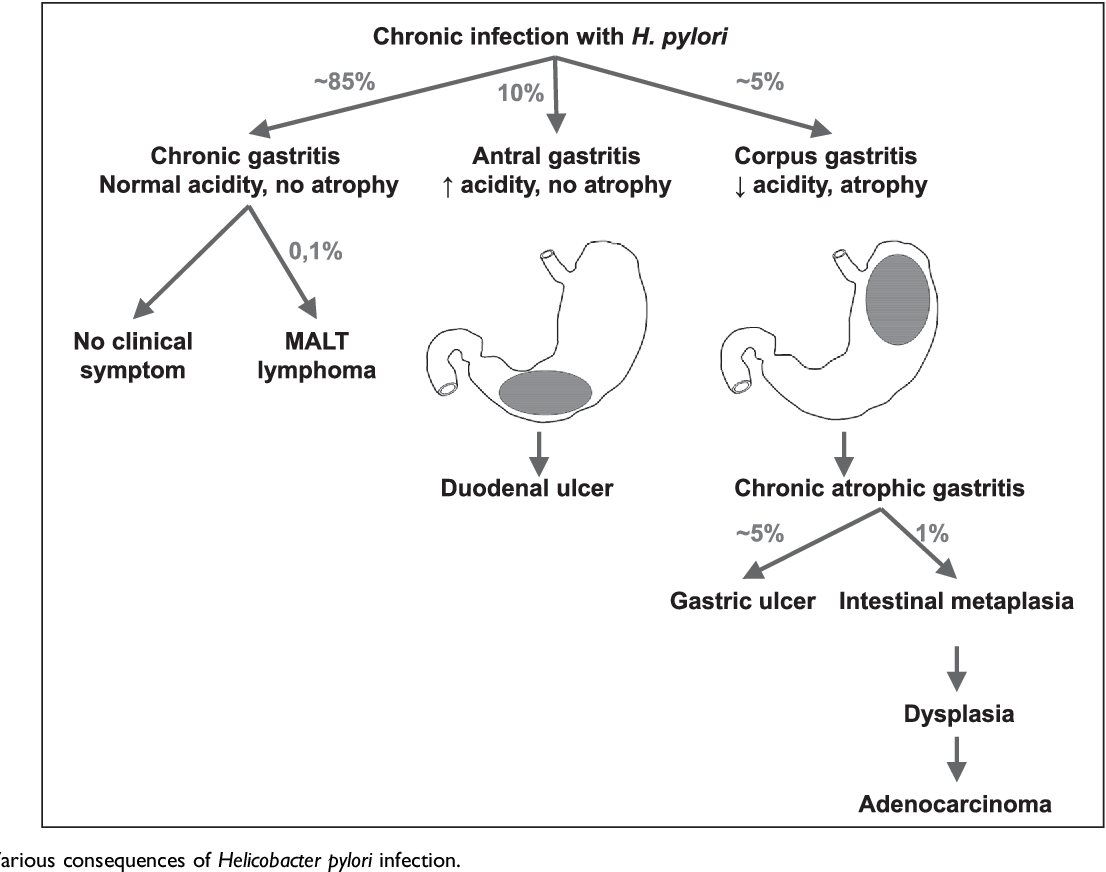 At the same time, the infection with this bacterium is much wider than the number of cases of peptic ulcer. That is, in more than 90% of carriers, the bacterium does not cause any pathologies. On this basis, scientists believe that the presence of Helicobacter pylori is not enough for the onset of the disease, a provoking factor is also needed. These factors are considered:
At the same time, the infection with this bacterium is much wider than the number of cases of peptic ulcer. That is, in more than 90% of carriers, the bacterium does not cause any pathologies. On this basis, scientists believe that the presence of Helicobacter pylori is not enough for the onset of the disease, a provoking factor is also needed. These factors are considered:
- overweight;
- smoking;
- consumption of alcoholic beverages;
- excessive indulgence in carbonated drinks and coffee;
- violations of the diet and diet;
- acute and chronic psycho-emotional stress;
- diabetes mellitus;
- sedentary lifestyle.
What are the symptoms of pathologies caused by Helicobacter pylori?
- Gastritis (inflammatory disease of the gastric mucosa).
Clinically, it is manifested by pain in the epigastric region, nausea, belching, a feeling of heaviness after eating, heartburn, general weakness and fatigue.
- Gastroduodenitis (inflammation of the mucous membrane of the stomach and duodenum).
Its symptoms are abdominal pain that occurs both before and after eating, nausea, stool disorders, weakness, sleep disturbances, and headaches. - Ulcer (deep inflammatory defect of the mucous membrane and underlying tissues of the stomach or duodenum).
Peptic ulcer has a relapsing course with exacerbations in autumn and / or spring. The main symptom of the pathology is pain in the upper abdomen. If the ulcer is in the stomach, the pain occurs after eating, and if in the duodenum, there are “hungry pains” on an empty stomach that disappear when eating. Also symptoms of peptic ulcer are heartburn, sour belching, weight loss, nausea and vomiting after eating.
What are the complications of Helicobacter pylori infection?
These are the complications that are characteristic of inflammatory and ulcerative lesions of the mucosa. First of all, this includes various cicatricial changes in tissues that make it difficult to move food from the stomach into the duodenum. Also, bleeding can begin from the damaged mucous membrane, which is manifested by vomiting, which looks like coffee grounds, changes in the blood test and general weakness. A rarer, but much more dangerous complication is the perforation of an ulcer, that is, the formation of a through hole in the wall of the intestine or stomach. This is an acute pathology that requires immediate medical attention.
Also, bleeding can begin from the damaged mucous membrane, which is manifested by vomiting, which looks like coffee grounds, changes in the blood test and general weakness. A rarer, but much more dangerous complication is the perforation of an ulcer, that is, the formation of a through hole in the wall of the intestine or stomach. This is an acute pathology that requires immediate medical attention.
How is Helicobacter pylori diagnosed?
Among the non-invasive methods for detecting this microorganism, the urease breath test is considered the most effective. Its advantages are simplicity and speed of implementation (the entire study takes about 45 minutes), as well as high reliability. This analysis is based on the fact that Helicobacter pylori is able to synthesize an enzyme called urease, which decomposes urea into ammonia and carbon dioxide. The first portion of exhaled air is given on an empty stomach in a sealed disposable bag. Then they give a strictly defined volume of urea solution to drink. After about 30-40 minutes, the patient should take a deep breath into another sealed bag. Both packages are sent to the laboratory, where the concentration of CO2 is measured in the air they contain. If it is higher in the second package, this indicates the presence of Helicobacter pylori.
After about 30-40 minutes, the patient should take a deep breath into another sealed bag. Both packages are sent to the laboratory, where the concentration of CO2 is measured in the air they contain. If it is higher in the second package, this indicates the presence of Helicobacter pylori.
Immunological diagnostic methods are also used: detection of antibodies to the bacterium Helicobacter pylori in the blood. But the most obvious method for detecting bacteria is a microscopic examination of tissue samples of the stomach and duodenum obtained during endoscopy, and the cultivation of isolated microorganisms on artificial nutrient media.
Make an appointment
Registration through the site is preliminary. Our employee will contact you to confirm the appointment with a specialist
By clicking on the button, you consent to the processing of your personal data
Previously, the role of Helicobacter pylori in the development of gastritis, duodenitis and ulcerative lesions of the stomach and duodenum was unknown. Therefore, these diseases were treated mainly with agents for neutralizing acidic contents (antacids) and agents that suppress the production of hydrochloric acid:
Therefore, these diseases were treated mainly with agents for neutralizing acidic contents (antacids) and agents that suppress the production of hydrochloric acid:
- proton pump inhibitors;
- h3-histamine receptor blockers;
- selective M-cholinolytics.
This treatment eliminated the symptoms and relieved the condition for a while. But such therapy did not eliminate the cause of the appearance of ulcers and inflammations, and therefore these pathologies often recurred.
Today, knowing about the role of bacteria in the occurrence of these diseases, antibiotic preparations can be used with high efficiency for the treatment of Helicobacter pylori. To create standards for such therapy in 19In 87, the European Commission for the Study of Helicobacter pylori was formed in Maastricht. It has met several times since then, and its recommendations have been collectively referred to as the Maastricht Consensus. At the moment, the fifth edition of these recommendations, adopted in 2016, is relevant.

 The fluid coats your throat and stomach and makes them stand out clearly on the image.
The fluid coats your throat and stomach and makes them stand out clearly on the image.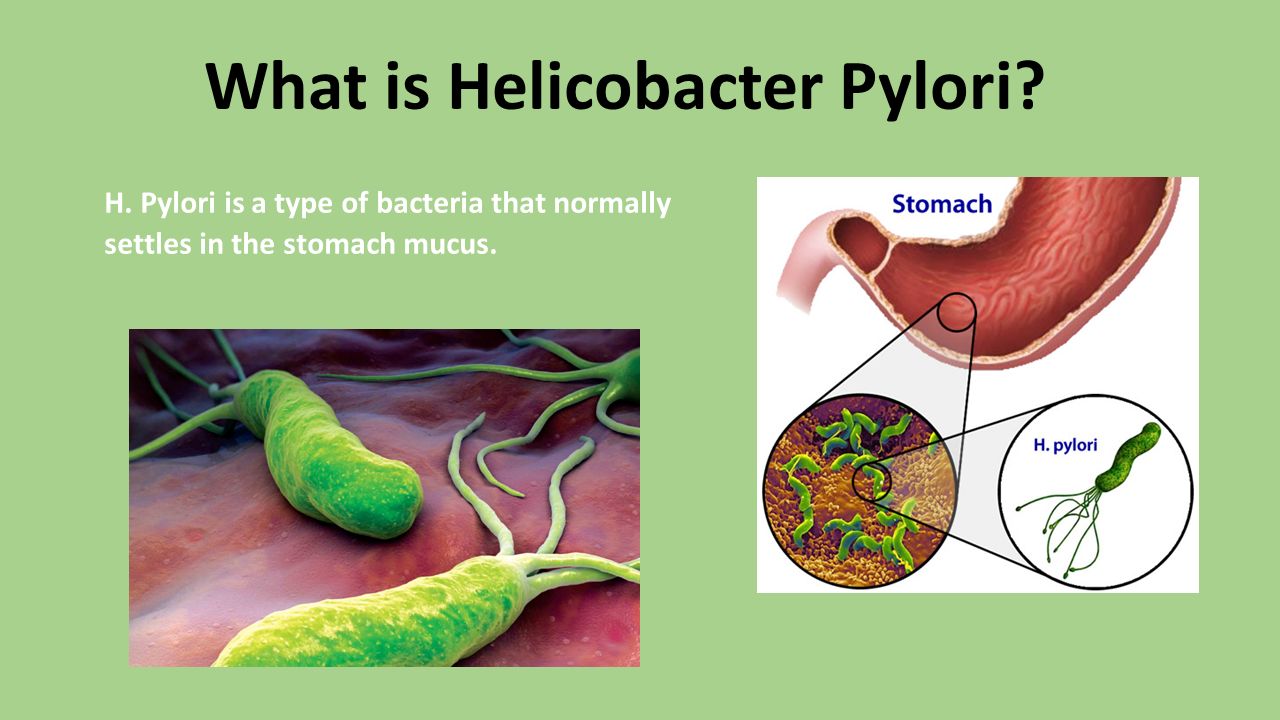
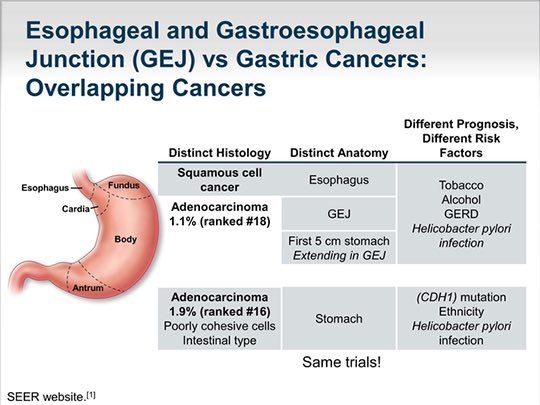
 You’ll drink a special liquid that has a substance called urea. Then you’ll breathe into a bag, which your doctor will send to a lab for testing. If you have H. pylori, the bacteria will change the urea in your body into carbon dioxide, and lab tests will show that your breath has higher than normal levels of the gas.
You’ll drink a special liquid that has a substance called urea. Then you’ll breathe into a bag, which your doctor will send to a lab for testing. If you have H. pylori, the bacteria will change the urea in your body into carbon dioxide, and lab tests will show that your breath has higher than normal levels of the gas. The fluid coats your throat and stomach and makes them stand out clearly on the image.
The fluid coats your throat and stomach and makes them stand out clearly on the image.
